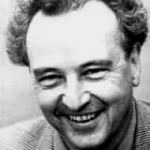Given the range of works across the classical repertoire, one wonders how the same Brahms and Beethoven warhorses continue to dominate programming, especially in the midst of constant debate about how to keep the art form lively. The Deutsches Symphonie-Orchester Berlin manages to prove an exception. An evening of Honegger, Franck, Roussel and Ravel under guest conductor Stéphane Denève on March 29 at the Philharmonie made this particularly clear.
César Franck’s Symphonic Variations for Piano and Orchestra (1886) uses a hybrid structure that hovers somewhere between concerto, symphony and variations’ cycle. The pianist and orchestra exchange short episodes of dialogue, with the soloist becoming more and more virtuosic. The influence of Chopin seems evident in recitative-like melodies that relegate the orchestra to the background.
The young pianist Bertrand Chamayou was an ideal champion of the music, delivering a gentle, passionate but clean interpretation in both soulful slow phrasing and racy passages in which he stayed perfectly in sync with the orchestra while Denève coaxed well-calibrated, swelling phrases. As an encore, Chamayou, who possesses a refreshingly assured but non-pretentious stage presence, offered a performance of Debussy’s Claire de Lune in which he inflected the melodies with the right touch of jazziness while also bathing them in a wash of pastels.
Opening the evening was Arthur Honegger’s Symphonie liturgique (1946), a work whose style might seem archaic against modernist developments which have claimed more social relevance. The score layers textures in strict, mostly tonal counterpoint to create a spiritual journey in protest of the “barbarity, stupidity, suffering, mechanization and bureaucracy” which emerged under Nazi occupation.
An angry Dies irae of frenetic strings and threatening brass gives way to a meditative Adagio, De profundis clamavi, whose aching, slow moving harmonies might recall Samuel Barber’s Adagio for Strings. The final Andante, Dona nobis pacem, builds into march-like, dissonant protest until the orchestra lets out a collective scream. After a lamenting cello emerges out of the dust, a flute descends out of the sky to deliver peace. The work’s overtly Christian message may verge on the kitschy, but it is composed with tremendous skill and emotional depth. The DSOB gave an earnest performance under guest conductor Stéphane Denève.
Albert’s Roussel’s Third Symphony (1930), another example of early twentieth-century music which struggles to find its place in the canon, proved an interesting companion in terms of orchestration, opening with an explosive, staccato brass and string motive that gives way to a plaintive flute melody. The work was commissioned by Serge Kossewitsky for the Boston Symphony and premiered to rave reviews.
With colourful instrumentation for the entire orchestra, the piece remains vibrant from beginning to end without becoming superficial. The second slow movement creates reflective pools of tragedy out of which, once again, a flute summons the orchestra out of its melancholy. The inner Vivace is a tour de force of festive gaiety, while the final movement—with its twittering winds and marching brass—is not without a hint of farce, evoking shades of Prokofiev and Stravinsky, but in a thoroughly idiomatic context. The DSOB played with high energy and clean attacks.
Closing the evening was the only familiar work on the program, Maurice Ravel’s Bolero (1928). Denève built tension gracefully as the work’s circular melody was tossed through the wind instruments—including saxophone—before consuming the entire orchestra in a throbbing dance. The piece was of course premiered not in straight concert but to choreography by Bronislava Nikinska at the Paris National Opera. In a better world, we would see all the great dance works of this era—by Debussy, Stravinsky, and even Strauss—performed as they were intended rather to a motionless, half-empty hall.
For more by Rebecca Schmid, visit rebeccaschmid.info
